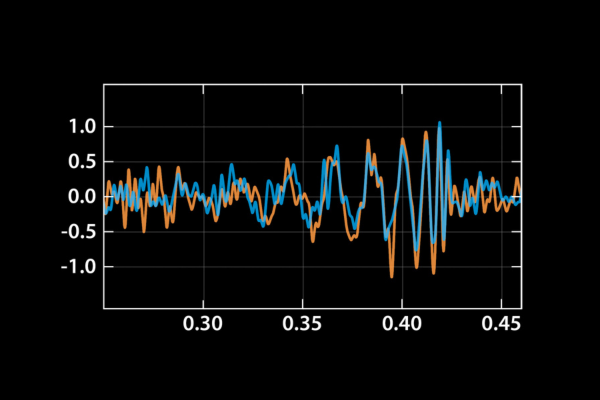
The gravitational signal GW150914 registered by LIGO interferometers, Livingston and Hanford, in the United States, on 14 September 2015
|
|
|
A new window on the universe: the first
gravitational signal
|
|
|
On 22 June 1916, at the Prussian Academy of Sciences in Berlin, Albert Einstein presented his “Approximative Integration of the Field Equations of Gravitation”. It was the first work in which gravitational waves appeared: disturbances in the gravitational field that travel through the vacuum at the speed of light and carry energy. Yet for a century, no trace of them could be found. Or rather, for one hundred years, there was no instrument on Earth sensitive enough to detect them. Until 2015, when two observatories dedicated to this search, newly upgraded, recorded an extraordinary signal. It was 14 September, and in February of the following year came the confirmation: the first-ever detection of a gravitational wave. Today, ten years on from that long-awaited announcement, we spoke to one of its key figures, Fulvio Ricci, to relive the epoch-making discovery and retrace the long road that made it possible.
|
|
|
|
|
Interview with Fulvio Ricci, Professor of Experimental Physics at Sapienza University of Rome and spokesperson for the international VIRGO collaboration at the time of the detection of the first gravitational signal
|
|
|
Fulvio Ricci is Emeritus Professor of Experimental Physics at Sapienza University of Rome. He began studying the problem of the direct detection of gravitational waves in the 1970s under the supervision of Professors Edoardo Amaldi and Guido Pizzella. Having become an expert in experimental gravitation and gravitational wave detection systems, and the author of numerous publications in international journals, he was for several years first national coordinator for INFN of the VIRGO experiment and then spokesperson of the international collaboration from 2014 to 2017.
|
|
What are gravitational waves?
According to Albert Einstein’s general relativity, space and time are not immutable. They form a structure – spacetime – which depends on the distribution of matter and energy in the universe and which, in turn, tells matter and energy how to move and propagate. Based on this theory, if matter moves rapidly through space, the properties of space itself change, its measurement changes, and thus the distance between two points in that space changes. And when very large, compact masses move quickly, the change is not localised but spreads throughout the universe, like a stone falling into a pond produces ripples on its surface. A wave is generated, a wave of space, or rather a wave of changing spatial properties, which we call a gravitational wave.
|
|
|
Miramare Terrace, Camogli (GE)
|
|
|
|
Real Casa dell’Annunziata, Naples
|
|
|
|
|
If you can't see the message below correctly, go here
If you receive this newsletter without subscribing, it means that you have been added to a list of recipients who may be interested, or you are an employee or affiliate of INFN.
If you no longer wish to receive this newsletter and are not an employee or affiliate of INFN, you can unsubscribe by sending an email to grafica@lists.infn.it.
Particle Chronicle © 2025 INFN
Newsletter Archive
EDITORIAL BOARD
Coordinator Martina Galli;
Project and contents Martina Bologna, Cecilia Collà Ruvolo, Eleonora Cossi,
Francesca Mazzotta, Antonella Varaschin;
Design and mailing coordinator Francesca Cuicchio; ICT service SSNN INFN
INFN - COMMUNICATIONS OFFICE - Piazza dei Caprettari, 70 - 00186 Roma
www.infn.it - news@lists.infn.it
|
|
|
|